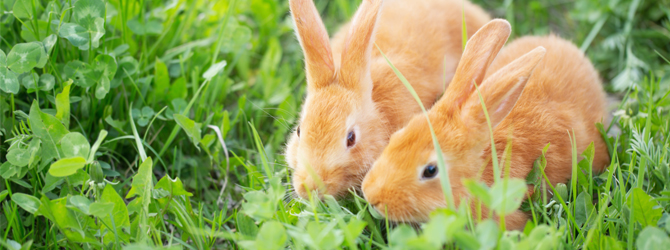Flystrike in rabbits: how to care for your rabbits and avoid fly strike
First Published: 22/01/2019
Last Updated: 24/11/2023
Flystrike is a serious condition that can be fatal to our rabbits. In order to know how to care for a rabbit and keep them safe from flystrike, it’s important to understand what flystrike is, the symptoms and how to prevent it. Let’s take a look…
What is flystrike?
Flystrike happens as a result of flies laying their eggs on a rabbit’s fur. Flies do this when the fur is dirty or damp, and it’s usually the fur around the rabbit’s bottom that is affected.
The eggs hatch into maggots and these maggots eat away at the rabbit’s skin, which can lead to severe infection and in some cases, death.
What are the symptoms of flystrike in rabbits?
During the early stages of flystrike, symptoms will include:
- Lethargy
- Hiding away
- Refusing food
- An nasty smell coming from the hutch
- Attempted digging in one corner (the rabbit trying to distract itself from the pain)
Once the condition becomes more severe, the rabbit might display signs of shock, which can include collapse. There will also be visible changes to the fur surrounding the bottom – it may appear darker in colour or have a damp or matted appearance.
How to prevent flystrike:
It’s important for owners to know how to care for a rabbit. Doing this properly will minimise the risk of flystrike.
Flies are attracted to bottoms that are soiled with urine or faeces, so the main way of preventing flystrike is to ensure your rabbit’s fur stays clean and dry.
Make sure your rabbits can self-groom
Obesity, dental problems and other illnesses can put your rabbits off grooming themselves so the first action to take is to ensure that your rabbits are as healthy as can be. Regular check-ups with the vet will help you spot health problems before it’s too late.
Is your rabbit eating the right food?
Rabbits who are fed high-sugar diets, such as muesli and excessive amounts of fruit & vegetables, are more likely to produce sticky droppings. Feeding your rabbit a fibrous diet that consists mainly of hay or grass will help aid their digestive process and will prevent droppings from sticking to their fur.
Avoid feeding your rabbits too much food. This can lead to obesity and overweight rabbits will not be able to clean themselves properly.
Ensure their hutch is clean and dry
Healthy rabbits are still at risk if they’re living in a damp hutch. Make sure your rabbit’s hutch stays clean and dry by providing lots of absorbent bedding and changing it every day.
Keep their hutch secure so that it can’t become damp from the outside. During the winter months, consider bringing your rabbits indoors where it’s warm and safe – make sure to store the hutch somewhere sheltered too.
Fly screens around your rabbits’ hutch can also be a great help, especially during the summer months.
Check your rabbits every day
Even with all of these safety measures in place, you can never be too careful! Check your rabbits’ fur daily (twice a day if possible) for damp or dirty patches. If you find dirty fur, wash it with warm water and dry it thoroughly.
During warmer periods when there are many flies around, you might want to consider a topical product to keep your rabbit safe. Ask your vet for more info.
Treat your rabbit with flystrike prevention
Apply flystrike treatment as directed by your vet, as Dave the vet demostrates in the video below.
What should I do if my rabbit has flystrike?
If you spot any of the symptoms, contact your vet as soon as possible. Flystrike can be fatal and can spread quickly so there’s really no time to waste!
Find your nearest vet using our Find a Vet page, or speak to a vet online using Online Vets.


